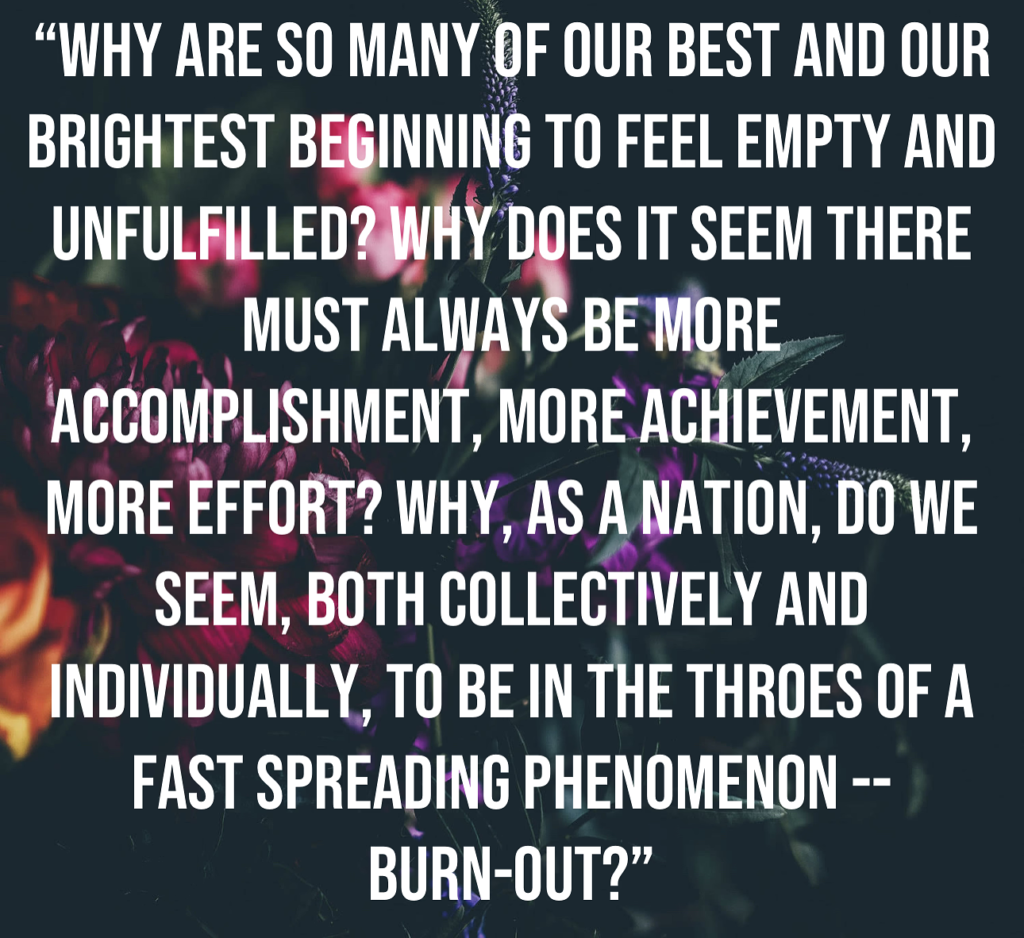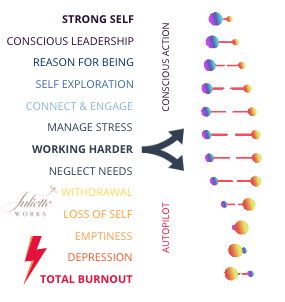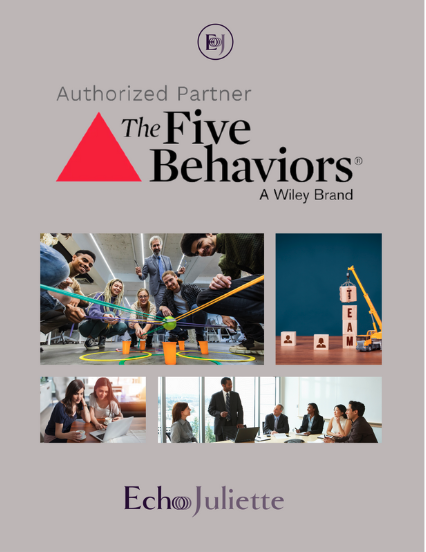Even those of us without children can feel the change of season from summer to “back to school”. Maybe summer casual dress is over, maybe your work colleagues are sporting a post holiday glow, or maybe everyone seems a bit more revved up for the final 1/3 of the year.
Year end. That’s the season that follows back-to-school and it can mean a race to the calendar finish line for many. That race can result in long to-do lists, packed days, too many holiday parties, and cause exhaustion, frustration, or even depression.
Yesterday I ran a Masterclass for the women in Juliette Lifeworks on recognizing, preventing, and addressing BURNOUT. It’s a popular class with employers this time of year because they know that when employees are overly busy they are more susceptible to burnout.
However, being busy doesn’t cause burnout and the tools for dealing with each are different.
— Making sure that “being busy” doesn’t overwhelm you requires prioritization, delegation, and optimization.
— Making sure that “burnout” doesn’t send you into a deep dark pit requires awareness, attention, and action.
There is a lot of misinformation about what burnout is so let me clarify it for you.
The World Health Organization’s official definition for burnout is “a syndrome conceptualized as resulting from chronic workplace stress that has not been successfully managed. It is characterized by three dimensions:
- feelings of energy depletion or exhaustion;
- increased mental distance from one’s job, or feelings of negativism or cynicism related to one’s job; and
- reduced professional efficacy.”
Busy and burnout can both lead you towards exhaustion, but it’s the negative mental impacts and resulting performance that distinguishes burnout. If you are starting to feel bitter, resentful or negative towards work or towards anything or anyone keeping you from work, then you may be on the burnout path.
In his book Burn-Out: How to beat the high cost of success, Dr. Herbert Freudenberger wrote, “Why are so many of our best and our brightest beginning to feel empty and unfulfilled? Why does it seem there must always be more accomplishment, more achievement, more effort? Why, as a nation, do we seem, both collectively and individually, to be in the throes of a fast spreading phenomenon — Burn-out?”


The nation he referred to was the US and the year he wrote this was 1980.
1980! Before the internet, before email, before smart phones, and before all the other technologies that enable us to accomplish and achieve exponentially more in a minute, hour, day, and lifetime.
I’d argue that this hasn’t been a fast spreading phenomenon at all.
Like burnout syndrome itself, it is a slow burn and it has been singeing us around the edges for decades to the point where many of us are living in a perpetual state of early burnout that ebbs and flows but never really quite goes away.
Some statements that indicate early burnout stages include:
– When I go home early from work it feels strange and I’m not sure what to do.
– If work is left behind, I feel guilty and worry about what others are going to think.
– Lately I’ve had to be very careful not to forget or overlook anything.
– I am having conflicts with colleagues more often than before.
– I don’t have time for connecting with friends and family and when I do I’m thinking about work.
– The only way I can switch off is social media scrolling or television streaming.
– The only way I can calm down and de-stress is with medication or alcohol.
If year-end usually means longer hours and increased social commitments then it’s a good time to watch out for burnout sneaking in.
You can start by defining how you’d like the next four months to feel. That’s often more challenging than listing what you want to achieve or accomplish before the end of the year so try to sit with it for a bit. Once you have defined how you want to feel make sure that you actively work towards making it happen and intentionally checking in on your progress.
From the Executive Maven Toolkit
Given this issue is about Burnout the tool I’m sharing this month is the Strong Self Helix.
When you find yourself working harder in this back-to-school season keep in mind that you can either spiral up or spiral down from there.
Neglecting your needs, withdrawing from others will start to lead to a loss of self, feelings of emptiness and maybe event depression before total burnout.
On the other hand, if you actively manage stress, stay connected and engaged with others and focus on yourself, your reason for being, and leading those around you then you can spiral upwards toward a strong self.


From Elizabeth on LinkedIn
Every issue I spotlight a post that most resonated with my network and in the last two weeks there was a tie and oddly one was about the start of school and one the end of school!
I am embarrassed to say that the first was about me backing into the nicest mom at school on the first day of pick-up! (Couldn’t you have upvoted another post?!)
You can read the full post here.
The other was my personal reflection on what I’m most grateful for from my years of undergraduate and graduate education.


You can read that post here.
Research and Expert Resources
I recently attended a call with Josh Bersin and team on Technology in HR with a focus on AI. You can download their latest AI research paper here.
HR is in a critical position with respect to the development and rollout of AI. HR is often underfunded and treated as a cost center rather than an investment area. Innovating the technology in HR is going to require strong business cases.
I have been helping several HR Leaders with their AI strategies and we continue to come back to an overriding mantra, “this investment must solve a significant problem for the organization, it can’t just make something incrementally better.”
Links and Resources
We have a new offering that we are very excited about. As many of you know, I am an authorized partner of The Five Behaviors which is Patrick Lencioni’s proven assessment and methodology for building high-performing teams.
For a limited time I am offering in-house HR leaders and managers the opportunity to become certified in The Five Behaviors. You will receive a lifetime certification from Wiley and train-the-trainer coaching from me.
The certification (including all materials) costs less than one full day of me delivering the Five Behaviors to your leadership team so it is instant payback.
If you’d like to learn more about our other offerings you can find our Services Decision Tree here.



